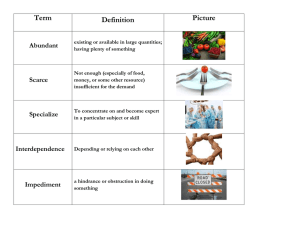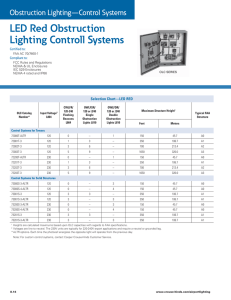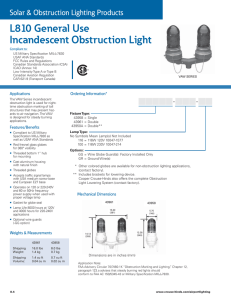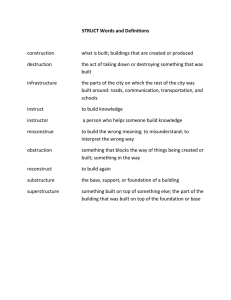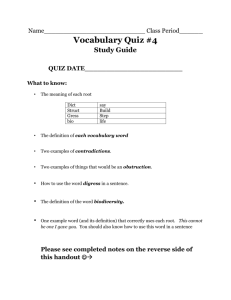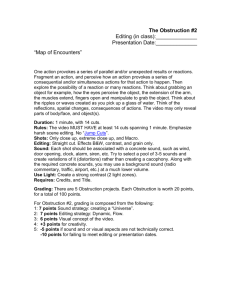Obstruction Lights
advertisement
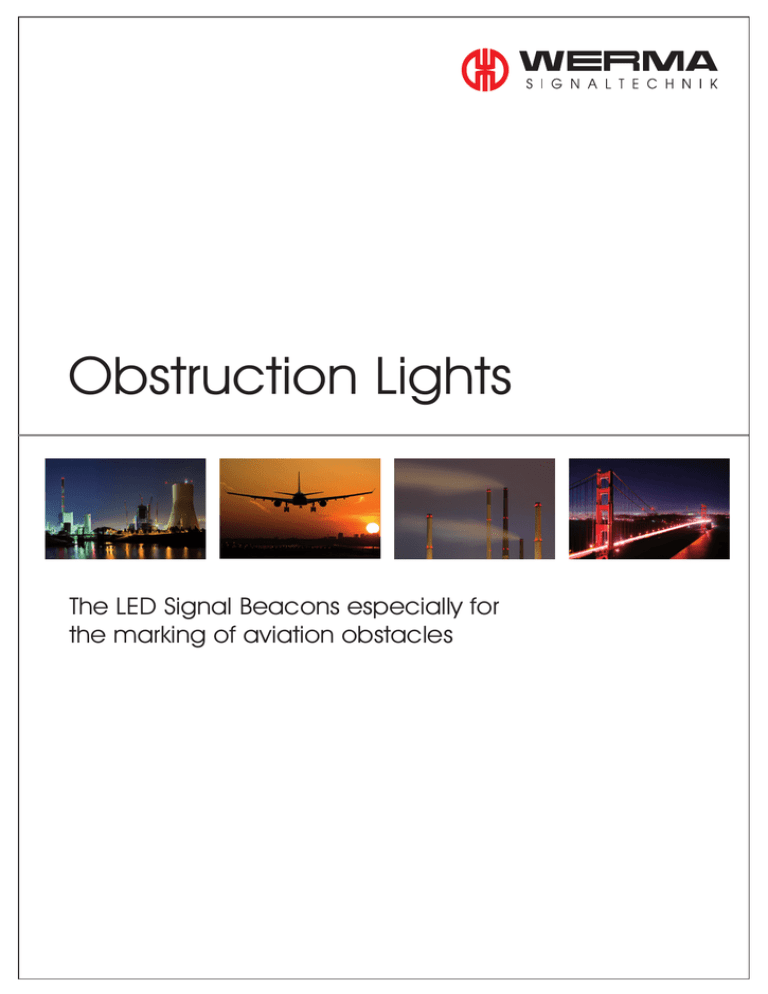
Obstruction Lights The LED Signal Beacons especially for the marking of aviation obstacles Obstruction Lights - the background Why do obstacles need to be illuminated? The law stipulates that buildings of a specific height and in the vicinity of airports as well as factory chimneys, towers, masts etc. must be equipped with obstruction lights. This special lighting makes obstacles visible for pilots in the dark or when visibility is poor. Obstruction lighting is one of the most important aspects of flight safety. What directives and regulations are there? The method of marking obstacles to air traffic is laid down by diverse laws, regulations and recommendations. These regulations have a clearly defined sphere of influence and are internationally interlinked. The International Civil Aviation Organisation (ICAO) is a special organisation within the United Nations created to establish and develop universal regulations for safety, continuity and economic efficiency in international air traffic. The recommendations of the ICAO are not directly binding in the member states, but must be transformed by them into the appropriate national legal regulations. In Germany the Ministry for Transport and digital Infrastructure (BMVI) issues the regulations covering obstruction lighting on buildings. The ICAO regulations regarding the methods of marking and lighting aviation obstacles can be found in ICAO Annex 14. • "Low intensity obstacle beacon type A": a red permanent night-time warning beacon for fixed obstructions with a brightness of 10 cd. • "Low intensity obstacle beacon type B": a red permanent night-time warning beacon for fixed obstructions with a brightness of 32 cd. Where are obstacle lights deployed? • Germany: Marking of aviation obstacles by night at any height providing the highest point of the obstacle can be marked. • According to ICAO: Marking of aviation obstacles by night up to 45 m (”Low-intensity Obstacle Light, Type A”). WERMA Signaltechnik GmbH + Co. KG D-78604 Rietheim-Weilheim Tel.: +49 (0) 7424 9557-0 Fax: +49 (0) 7424 9557-44 info@werma.com www.werma.com 280 Low-intensity LED Obstruction Light Type A and B • Very bright solution which far exceeds • For use as “Low-intensity Obstruction Light, Type A or B“ in accordance the required light with ICAO Annex 14 output (32 cd) • High impact resistance to • 230 V version with or without 20 Joules monitoring function n uratio Life d ,000 hrs 50 up to TECHNICAL SPECIFICATIONS: Dimensions (Ø x Height): 142 mm x 218 mm Housing:PC/ABS-Blend Lens: PC, transparent, clear Fixing: Base mounting, bracket mounting (accessory), tube mounting (accessory) Connection: Screw terminal with wire protection max. 2.5 mm2 Cable entry: Cable diameter 5-7 mm Duty cycle: 100 % Current consumption at failure of 2 of the 12 LED strips: < 50mA LED Obstruction Light Type B +50°C 490 g IP 65 -30°C 20J ORDER SPECIFICATIONS: Low-intensity LED Obstruction Light Type A Voltage 12-50 V DC Current consumption 500-100 mA aviation red 280 410 55 Low-intensity LED Obstruction Light Type B Voltage 24 V DC Current consumption ~ 400 mA aviation red 280 470 55 LED Obstruction Light Type A The adaptor (accessory) allows quick and simple mounting on a tube 230 V AC ~ 200 mA 280 470 68 230 V AC with monitoring funct. ~ 200 mA / < 50 mA (Failure mode) 280 480 68 ACCESSORIES: Plastic bracket for wall mounting Adaptor for tube mounting Plastic bracket, adaptor for tube mounting (accessories) 975 883 06 975 883 09 ADDITIONAL INFORMATION: Monitoring function: To provide enhanced safety for obstruction light applications WERMA has developed a variant with an integrated monitoring function. Behaviour of defective obstruction light Should any two of the twelve LED strips fail, the light will switch to failure mode (see image). This can be detected for example by a current monitoring relay. After repeatedly checking the product status the unit will remain in failure mode for 30 minutes before again checking the status. 280 WERMA Signaltechnik GmbH + Co. KG D-78604 Rietheim-Weilheim Tel.: +49 (0) 7424 9557-0 Fax: +49 (0) 7424 9557-44 info@werma.com www.werma.com 281 Low-intensity LED Obstruction Light Type A and B • LED Obstruction Light with robust • 230 V version with or without glass/metal housing monitoring function (Type B) • For international use as „Low-intensity • Suitable for use in tough operating conditions, salt water resistant Obstacle Light, Type A or B“ in accordance with ICAO Annex 14 Dimensions (Ø x Height): Housing: Lens: Fixing: Connection: Cable entry: LED Obstruction Light Type B n uratio Life d ,000 hrs 50 up to TECHNICAL SPECIFICATIONS: 185 mm x 205 mm Aluminium, coloured powder coating Reinforced borosilicate glass Base mounting, tube mounting M25 (no accessory required) Screw terminal with wire protection max. 2.5 mm2 Cable gland M25 x 1.5 mm (included in assembly), Cable diameter 9-17 mm Reducer unit (included in assembly) +50°C 2 kg IP 66/ IP 68 -30°C ORDER SPECIFICATIONS: Low-intensity LED Obstruction Light Type A Voltage 12-50 V DC Current consumption 500-100 mA aviation red 281 410 55 Low-intensity LED Obstruction Light Type B Voltage 24 V DC funct. Current consumption ~ 400 mA aviation red 281 470 55 LED Obstruction Light Type A 230 V AC 230 V AC with monitoring ~ 200 mA 281 470 68 ~ 200 mA / < 50 mA (Failure mode) 281 480 68 ADDITIONAL INFORMATION: Salt water and fuel resistant To protect the obstruction light against sea salt, UV radiation or aviation fuel, WERMA has selected a particularly robust material - the aluminium die-cast housing is made of a high-quality salt water resistant alloy which is covered with a powder coating. The glass lens is made of hardened borosilicate glass. This ensures that the signalling device does not weather even in the toughest conditions. 281 WERMA Signaltechnik GmbH + Co. KG D-78604 Rietheim-Weilheim Tel.: +49 (0) 7424 9557-0 Fax: +49 (0) 7424 9557-44 info@werma.com www.werma.com


